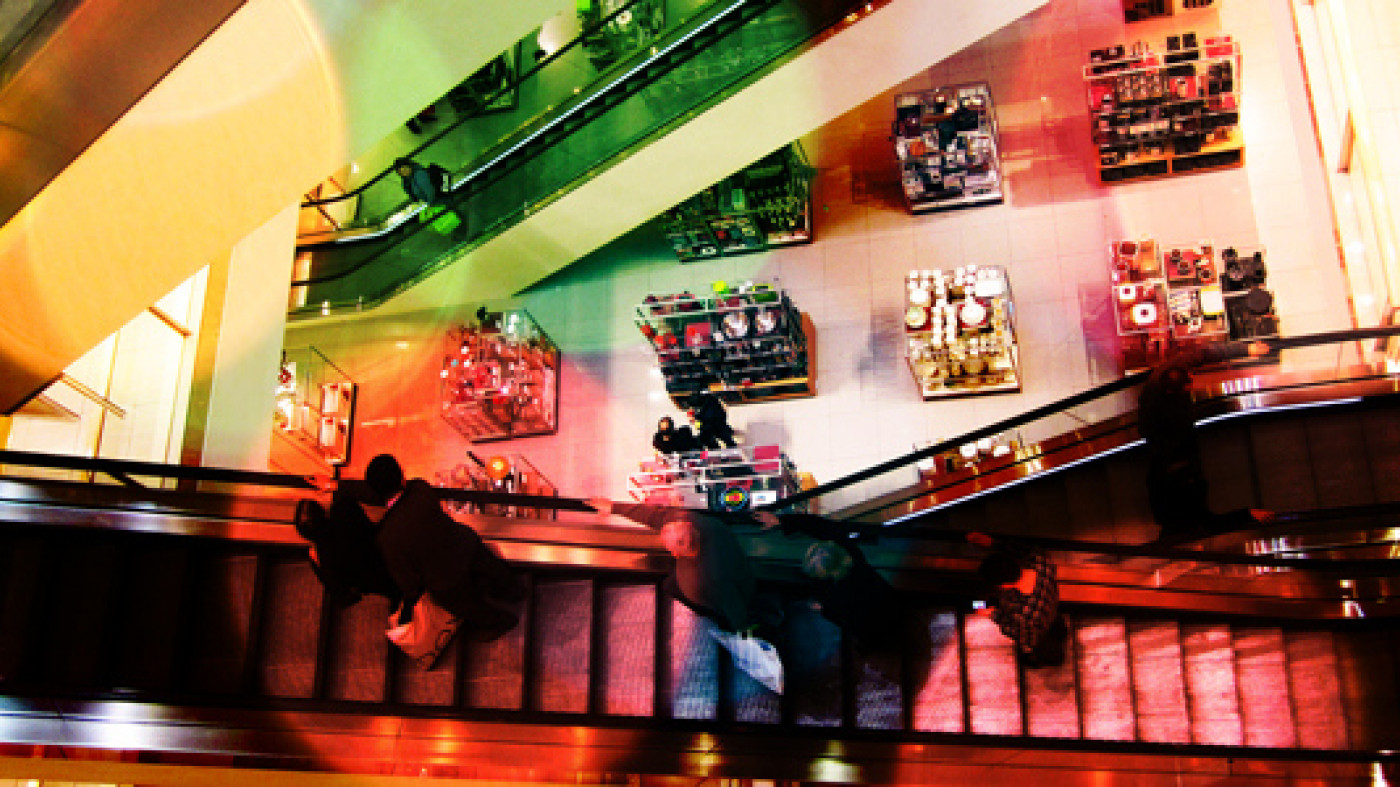When you walk into a retail environment, what elements are placed there to attract you?
The sign, the colour scheme, the window displays; but what other components are working to make it the kind of space that leaves you wanting to spend more time there?
Put crudely, branding is about the manipulation of the audience. You can capitalise on their conscious, subconscious and even their unconscious.
The average consumer would do well to notice even half of the barrage of stimuli that they are bombarded with on a daily basis. Sights, smells, sounds and symbolism.
Obviously, these aren't groundbreaking concepts, retailers have been using them for years. Some, such as the smell of fresh bread pumped out at the entrance of a supermarket, has been used for so long they've become cliched. We're all aware of it now, and maybe even immune to it.
The importance of sensory branding and its effect on the retail atmosphere was noted as long ago as 1973 by Philip Kotler, one of the most significant features of the total product is the place where it is bought or consumed. In some cases, the place, more specifically the atmosphere of the place, is more influential than the product itself in the purchase decision. In some cases, the atmosphere is the primary product.
So what about non-food retailers? Is it relevant?
There's nothing offensive about the smell of freshly baked bread, but how would you assign a smell to a TV?
Martin Lindstrom, the author of Brand Sense, writes that smell influences emotions and mood and can trigger memories of a specific time in our lives. Some scents will evoke energy; others make us feel warm and cosy. Selecting the right blend of tones to project the right message is what scent companies set out to accomplish.
It's about putting your audience in the right frame of mind to get the most out of them in your environment.
My opinion is that it would be a potential minefield for a brand to hit the scent-marketing nail squarely on the head. Smells which evoke memory & emotion (known as the Proust effect) are subjective, namely different for everyone, which one would assume, makes it very difficult to generate a smell to please all or even the majority. Personally, I struggle with most scents, having an exceptionally sensitive sense of smell, but there are now companies that specialise in scent marketing.
The psychology and physiology of lighting
An alternative approach to creating the correct atmosphere, one that is slightly less subjective (or in my case, less offensive), is with lighting.
David Derbyshire of the Telegraph writes, Lighting is crucial. The fashion retailers Next changed their light bulbs a few years ago to more energy-efficient ones, but sales went down. They discovered that part of the reason was that the clothes looked a different colour. The blues looked green.
Some department stores lower the lighting in the lingerie department so people feel relaxed about flicking through pants!
This is lighting on the simplest level.
Looking at colour temperature, a light at the red end of the spectrum will make your space look warmer, whereas one at the blue end will make it look cooler. This contradicts the symbolic perception of blue as a calming colour and red as an aggressive colour.
Worldhealthdesign.com states that if the application of colour is not based on aesthetic impressions, it is the influence of trends, styles and associations that form the basis for colour selection. Every colour has its own properties that can evoke emotions.
There is a solid scientific basis in the belief that lighting affects consumer behaviour, with research outlining both the psychological and physiological effects.
The recent paper on the health effects of artificial light by the Scientific Committee on Emerging and Newly Identified Health Risks (SCENIHR) outlines some interesting results, several studies report that shorter wavelengths (blue light) are significantly more efficient in generating alertness responses than longer wavelengths (red light).
During a 4-week study, subjects spent their working day in either a blue-enriched white light environment or a plain white light environment. A number of measures of alertness, mood, performance and fatigue improved in the blue light conditions, compared to the white light conditions. Blue light suppresses melatonin levels, which controls our circadian (wake-sleep) rhythm.
Long term, the effects of melatonin suppression could have a negative effect on our health. We will be more alert, awake longer more tired. Sadly, that is the story that is modern life.
With a combination of well-considered lighting combined with coloured accent lighting, it is now much more economically viable to have a lighting system which gives the user full control over colour and brightness. Manoeuvring people (be it customers, workers, students or patients) behaviour onto a spectrum, ranging from relaxed to alert.
It brings a whole new aspect to the term Retail Therapy.
What would a brand hope to achieve from implementing these tools?
Some would argue everything if you get it right. The perception of the quality of the retail environment is directly transferable to the product. Once more, we are reminded that a brand is so much more than a logo and set of guidelines. There are many other devices that you can use to reinforce your brand values and make your brand one customers aspire to.
Like all branding applications, it can be a gamble unless it's in reliable hands!
Resources
http://www.economist.com/10250329
http://www.nytimes.com/2007/09/09/realestate/keymagazine/
http://www.telegraph.co.uk/They-have-ways-of-making-you-spend/
http://www.shura.shu.ac.uk/496/1/
http://www.ec.europa.eu/health/scenihr_o_035.pdf
http://www.sciencedaily.com/110912092554.htm
